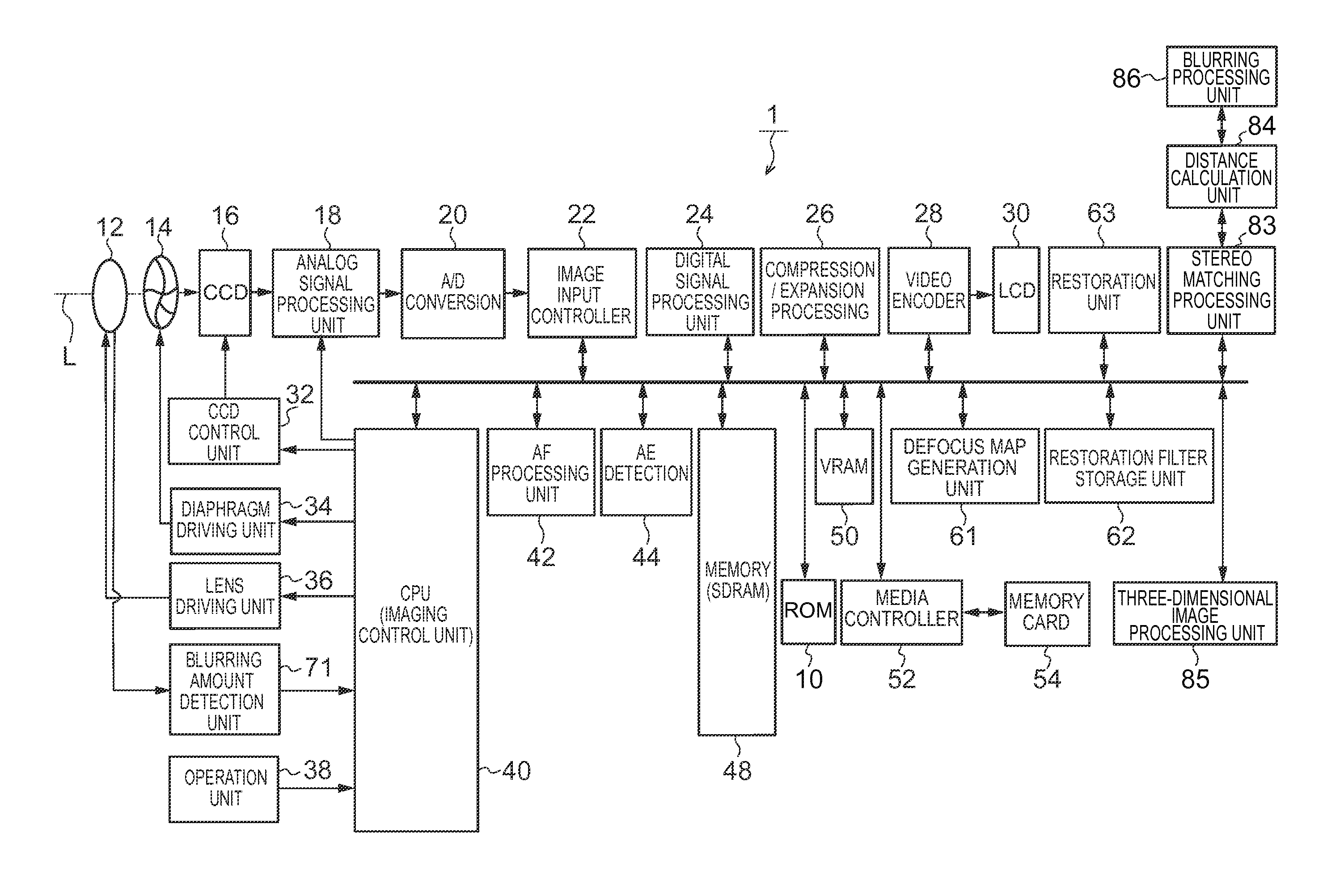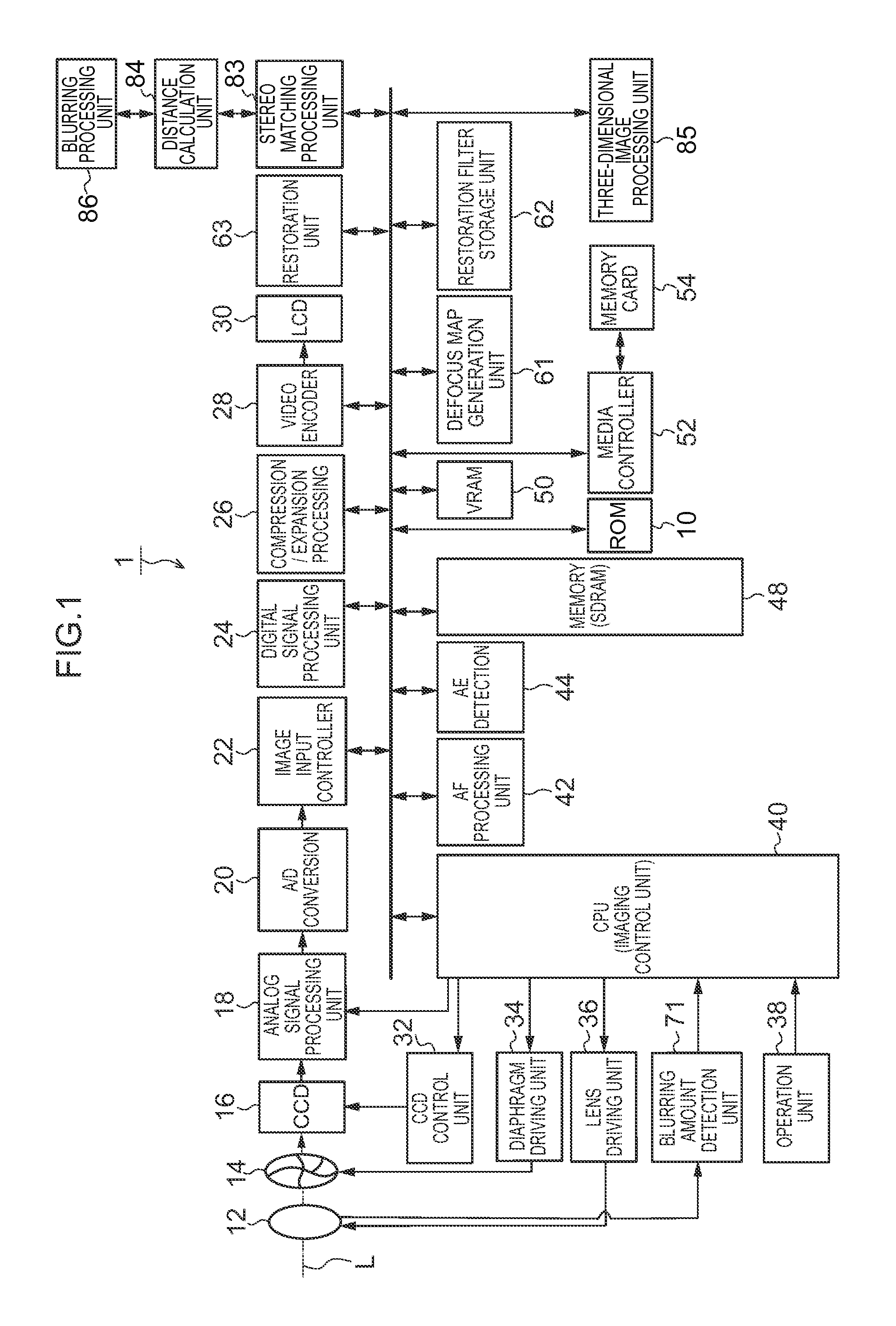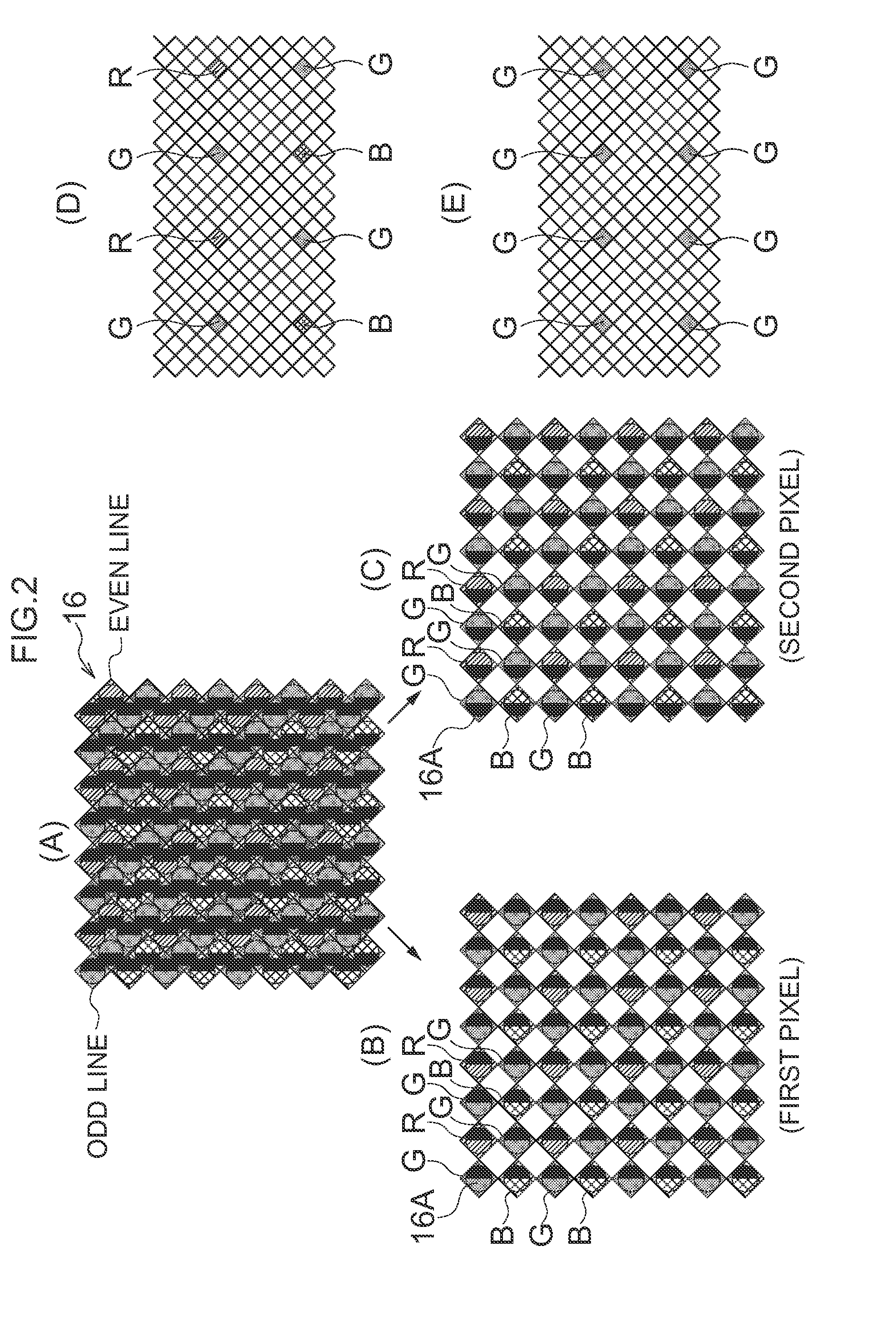Imaging device and imaging method
a technology of imaging device and image, applied in the field of imaging device and imaging method, can solve the problems of limited creative image formation, inability to blur foreground and background, etc., and achieve the effect of reducing parallax
- Summary
- Abstract
- Description
- Claims
- Application Information
AI Technical Summary
Benefits of technology
Problems solved by technology
Method used
Image
Examples
first embodiment
[0042]FIG. 1 is a block diagram showing a mode for implementing a camera 1 according to the first embodiment.
[0043]The camera 1 is configured to record imaged images on a memory card 54, and the operation of the entire device is collectively controlled by a central processing unit (CPU) 40.
[0044]The camera 1 includes an operation unit 38 such as a shutter button, a mode dial, a reproduction button, a MENU / OK key, a cross key, and a BACK key. A signal from the operation unit 38 is inputted into the CPU 40, and the CPU 40 controls each circuit of the camera 1 based on inputted signals. For example, the operation unit 38 performs such control as lens drive control, diaphragm drive control, photographing operation control, image processing control, image data recording / reproduction control, and display control of an LCD monitor (LCD) 30 for stereoscopic display.
[0045]A ROM 10 stores programs executed by the CPU 40 and various data necessary for executing control, pixel defect informatio...
second embodiment
[0109]FIG. 6 shows a flow chart of imaging processing of a plane static image according to a second preferred embodiment of the present invention. This processing is started in response to the photographing mode being set to “2D static image recording.”
[0110]Steps S11 to S14 are similar to steps S3 to S6.
[0111]Steps S15 to S16 are similar to steps S1 to S2.
[0112]Step S17 is similar to step S7.
[0113]When the photographing mode is “2D static image recording,” a pair of viewpoint images itself, which were imaged according to the parallax-oriented program diagram, is not recorded. Therefore, acquisition timing of the pair is basically arbitrary. However, in order to minimize a composition gap between pairs of viewpoint images at the two different points of time, the pair should preferably be acquired at adjacent points of time before or after the second stage-pressing of the shutter button. In the case where a pair of viewpoint images is acquired before the second stage-pressing, that i...
third embodiment
[0115]In imaging processing of a plane static image in the first embodiment, the diaphragm 14 may constantly be opened and one pair or a plurality of pairs of viewpoint images may be acquired in S1. A difference between those pairs of viewpoint images and a 2D image (blurring target image) acquired in S6 may respectively be calculated, and a pair of viewpoint images with the smallest difference may be defined as the pair of viewpoint images for calculation of parallax information in S2.
[0116]For example, the CPU 40 synthesizes, in units of pair, one pair or a plurality of pairs of viewpoint images acquired with the diaphragm 14 being opened, and generates a 2D image (candidate image) that serves as a candidate for calculation of parallax information. The CPU 40 calculates a motion vector between the candidate image and the blurring target image. As the method for detecting the motion vector, various kinds of publicly known technologies may be employed. For example, the CPU 40 first ...
PUM
 Login to View More
Login to View More Abstract
Description
Claims
Application Information
 Login to View More
Login to View More - R&D
- Intellectual Property
- Life Sciences
- Materials
- Tech Scout
- Unparalleled Data Quality
- Higher Quality Content
- 60% Fewer Hallucinations
Browse by: Latest US Patents, China's latest patents, Technical Efficacy Thesaurus, Application Domain, Technology Topic, Popular Technical Reports.
© 2025 PatSnap. All rights reserved.Legal|Privacy policy|Modern Slavery Act Transparency Statement|Sitemap|About US| Contact US: help@patsnap.com



